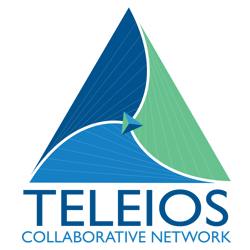
Whether you are a turkey-lover or practice a meat-free diet, chances are when you sit down to Thanksgiving dinner that stuffing is one of the showstoppers on the table. Whether you call it dressing or stuffing, whether it’s in the bird or prepared in a separate dish, you can’t go wrong with chunks of bread cooked with celery, broth and special seasonings.
However, my son would disagree. I don’t know where I went wrong raising him, but he’s not much of a stuffing fan. Can you imagine Thanksgiving dinner without stuffing? Sounds like a nightmare to me, but it is his right to pass on this traditional dish. He gets to decide what he does and does not want, no matter how flawed I think his decision is and how much I know he is missing.
When you think about it, advance directives really work the same way. Advance directives include legal documents and physician orders meant to guide care at the end of life. Sometimes these documents are completed when the individual is not seriously ill so that if an unanticipated accident or illness occurs, the individual’s wishes can be known and carried out, alleviating the burden on their loved ones. More frequently, however, we wait until we are elderly, or at least seriously ill, before we not only decide what we want to happen but also take the time to set out our decisions on paper.
Why do we put off such critical decision-making? For much the same reason we procrastinate doing other important things, like committing to a regular exercise program or saving for retirement. Not only is creating advance directives a little bit tedious, but it can also be complicated. Do I need a living will, or a power of attorney, or both? What does “D.N.R.” stand for? And what is this “MOST” I keep hearing about? It can be intimidating.
So, what are the different forms of advance directives? That may depend upon where you live, but no matter what you call them, the following are generally available in some form or fashion in every state.
- Living Will – allows an individual to dictate in advance what end-of-life treatment they want or do not want, such as life support or artificial nutrition and hydration. A living will is only used by healthcare providers when the individual is no longer able to communicate his or her decisions.
- Durable Power of Attorney for Healthcare or Designation of Healthcare Surrogate or Proxy – allows an individual to designate a person or persons to make their healthcare decisions when they themselves are unable to do so. Depending on how the document is drafted, this designation can be triggered not only at the end of life but at any time the individual needs treatment and cannot make decisions.
- Do Not Resuscitate (DNR) – typically refers to a set of physician orders in the patient’s chart based on the wishes communicated to the physician. However, some states offer also sanction DNR forms that can be completed by the patient and used to inform EMS workers of the individual’s wishes during an emergency.
- Portable Medical Orders – generally combine an expanded version of the decisions made in a living will and designate a person to make healthcare decisions when he or she can no longer do so. An additional benefit of portable medical orders is that they are signed by a physician or advanced practitioner, so they act as a set of physician orders and are transferrable across provider types, including EMS. States have several different names for portable medical orders, but nearly half of states call these Physician Orders for Life-Sustaining Treatment (POLST).
Individuals who are young and healthy may be hesitant to make advance directives because they wonder if their current wishes for end-of-life care might change over the years or if the healthcare surrogate they designate now will still be the person they want involved in their care 30 or 40 years in the future. One of the great things about advance directives is that they can be updated any time, so we are not necessarily locked into the decisions we make today.

Advance directives, while important, do not have to be a complicated or scary thing. This is where hospice and palliative care providers can play a pivotal role in our communities. By demystifying the concepts involved with advance directives, we have a unique opportunity to shape the care we will later provide. Wouldn’t it be a wonderful thing to admit a 65-year-old patient to hospice who tells you he already has advance directives in place because he attended a workshop or webinar that your organization provided 35 years earlier? What a success story!
Even those of us who work in healthcare perhaps have not taken the important step of making our wishes known. I confess as I am writing this blog, I am a 44-year-old single mother who does NOT have an advance directive. In a few short years, if something should happen to me, my son will be an adult and may bear the burden of making my healthcare decisions. Can you imagine being the tender age of 18 and deciding whether to remove your mother from life support? Here and now, I make the commitment to not allow that to happen. If you want to join me and take control of your future healthcare, a great place to start is the advance directives page on the National Hospice & Palliative Care Organization’s (NHPCO) website, which includes links to advance directives in each state.
Perhaps you are a step ahead of me and already have advance directives in place. What about your parents, children, or other loved ones? Whether you are passing turkey and stuffing around a table together or practicing a socially distant holiday, it is a great time to encourage the important people in your life to engage in the ultimate self-care: making their wishes known. To bolster your courage, watch The Conversation Project’s Ask What Really Matters This Thanksgiving and download the Conversation Starter Kit and other tools.

CPHRM, Chief Officer of Risk and Contract Management
Teleios University (TU)
2nd Program Launch: January 21-22, 2021
Discover More

An organizational model that allows not-for-profit hospices (Members) to leverage best practices, achieve economies of scale and collaborate in ways that better prepare each agency to participate in emerging alternative payment models and advance their charitable missions.
Related Posts
Are You Prepared to Weather the Storm?
Charles Kettering said, “Every time you tear a leaf off a calendar, you present a new place for...
Work-Life Harmony
Each year, I like to revisit the concept of a work-life balance and find this topic especially...
The Rhythms of Life and Work Life Blend
I wanted to revisit the idea of work life blend and reshare a couple of ways that I believe we can...


